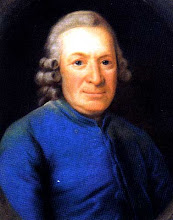For more than two millennia, the concept that imbalance was basic to most disease processes was accepted in both Eastern and Western medicine.
- The Hippocratic school held that all illness was the result of an imbalance in the body of the four humours, fluids which in health were naturally equal in proportion (pepsis).[25] When the four humours, blood, black bile, yellow bile and phlegm, were not in balance (dyscrasia, meaning "bad mixture"), a person would become sick and remain that way until the balance was somehow restored. Hippocratic therapy was directed towards restoring this balance. For instance, using citrus was thought to be beneficial when phlegm was overabundant (Wiki),
- Traditional Chinese medicine is largely based on the philosophical concept that the human body is a small universe with a set of complete and sophisticated interconnected systems, and that those systems usually work in balance to maintain the healthy function of the human body(Wiki)
As Western medicine matured, it gained tools such as the microscope, petri dish and many more and just as
Linneau at the peak of the enlightenment classified plants,so did other classify the various illnesses. This was all to the good. But as knowledge progressed and amazing leaps in medical therapy were made, a new medical paradigm was developing.
When I was in high school in the late '50s, I was an avid reader and regularly reviewed
Scientific American. I witnessed in the field of nuclear physics an explosion of particles that were derived from the atom. When the number surpassed 35 I gave up reading any more. Just as Italian politics at that time, when prime minister were coming and going nearly on a weekly basis. Too many prime ministers and too many particles told me even in my adolescence that something was wrong in theoretical physics and in Rome.
Murray Gell-Mann and
George Zweig introduced the quark and brought some order, Bellasconi still proves that Italy can not govern itself. Western medicine has evolved Although Descartes supported mind-body
duality and saw the body as an automaton run by the brain, he did recognize that the body could influence the brain. Unfortunately, while most physicians pay lip service to Hans Selye's concept of stress, most continue to practice medicine as if the unitary link between mind and body did not exist.
The following are landmarks in the development of psychoneuroimmunology:
Homeostasis (from
Greek: ὅμοιος,
homoios, "similar"; and ἵστημι,
histēmi, "standing still"; defined by
Walter Bradford Cannon in 1929 + 1932
is the property of a system, either
open or
closed, that regulates its internal environment and tends to maintain a stable, constant condition. Typically used to refer to a living
organism, the concept came from that of
milieu interieur that was created by
Claude Bernard and published in 1865 (
Wiki)
Hans Selye's inspiration for the general adaptation syndrome (GAS, a theory of
stress) came from an endocrinological experiment in which he injected mice with extracts of various organs. He at first believed he had discovered a new hormone, but was proved wrong when every irritating substance he injected produced the same symptoms (swelling of the
adrenal cortex, atrophy of the
thymus, gastric and duodenal ulcers). This, paired with his observation that people with different diseases exhibit similar symptoms, led to his description of the effects of "noxious agents" as he at first called it. He later coined the term "
stress", which has been accepted into the lexicon of various other languages.(
Wiki)
In 1964, George F. Solomon, published "
Immunity, emotions and stress. With special reference to the mechanisms of stress effects on the immune system" and birthed the field of psychoneuroimmunology. In the next thirty years multiple articles proving that stress, modifying the immune system was directly linked to illness not only psychologic but also physical. No longer could the various infirmities that plague us exist in their solitary splendor or decay but could be linked into a common structure resulting from an imbalanced immune system. Diseases are not to be classified like plants but are intimately linked with each other.
In the near future, I plan to write a section that shows how diseases are linked by the bias of the cytokines that are associated with them. I will show that the development of
T helper cell (Th) imbalances of the subsets Th1 and Th2 reciprocal systems are the not markers for disease but the causative factor.
Finally, I would suggest that you review
RB Moss's fine article that reviews the multiple conditions that are associated with imbalances of Th1 and Th2 cells. Moss suggests a couple of methods to restore this imbalance and his approach, especially with
DNA vaccinations, may prove to be invaluable.My contention in this
unpublished article that the PURSOR protocol can achieve a similar balance needs to be proven, but if it can, WOW.





